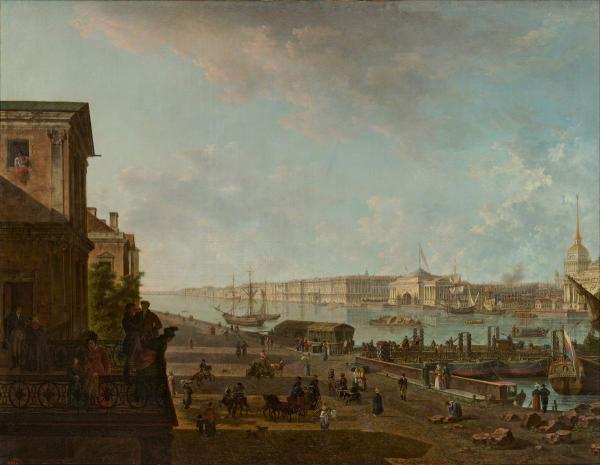The artist is Alekseev

+ Virtual excursion &Laquyagilev. START&Raquo >>>
– Hide the text of a virtual tour &Laquyagilev. START&Raquo
Exhibition “Two centuries of Russian painting and sculpture”. Paris, Autumn Salon, 1906.
This show made a real splash, because for the first time Russian art was so widely shown abroad. 750 exhibits 103 artist occupied 12 Grand Palais halls (Grand Palace)! “Exchange Vedomosti” reported: “The French liked our art, mostly old, that they decided to annually divert the Russian department with a whole Anfilade Hall”. Diaghilev dreamed about this, persistently repeating in his articles the idea that it was necessary to “break with the self -isolation of Russian culture …”.
The exhibition in the autumn salon was a retrospective that logically arose after the success of the Tauride (1905). In fact, the exposition covered a greater time period, since it began amazing in beauty by a collection of ancient icons. In the art section of the XVIII – early XIX centuries, the best portraits of the recent Tauride exhibition were supplemented by landscapes, genres and graphics. Among the landscapes, the works of Fedor Yakovlevich Alekseev, who, like Semyon Fedorovich Shchedrin, can be called the ancestor of the Russian landscape. But if Shchedrin is a singer of garden and park ensembles, then Alekseev is the founder of the city landscape.
At the turn of the XVIII-XIX centuries, interest in the past of Russia has unusually increased, which in the field of landscape expressed in the desire to capture the images of new and old cities and various places of the Russian Empire. The creation of such works had not only artistic, but important documentary and social significance. Admiralty and Palace embankment Alekseev portrayed repeatedly. In this case, the species was taken from the first cadet corps located on Vasilyevsky Island. On the opposite bank, starting from the Admiralty, a series of buildings of the palace embankment stretches. Such a length of the composition corresponds to the author’s task – thoroughly and with documentary accuracy to display what he saw. But reproducing the real appearance of buildings, the artist somewhat summarizes their forms, enveloping with a silver haze, turning a dry architectural drawing into a truly art work. Human figures organically included in the canvas contribute to this, and there are much more of them than in previous works.
As well as at the Parisian show, Alekseev’s works are given a lot of attention at this exhibition, two more works on the opposite wall: a view of the master “View of the Palace Embankment from Petropavlovskaya Square” and deserves special attention “The view of the Kazan Cathedral in St. Petersburg”.
E.AT.Amphilokhiev, e.AT.Stankevich and N.AND.Fedorova. Materials for a virtual tour of the exhibition "Diaghilev. Start". 2009
Go to the beginning of the virtual tour “Diaghilev. START”
The works of Fedor Alekseev attract attention not only by the fact that he recreates documented species of St. Petersburg on the canvas and gives them an emotional, artistic-shaped character. His works became an interesting material in the study of the history and change of the architectural appearance of the Northern capital.
In the foreground is the upper terrace of the First Cadet Corps, founded in 1732 and located in the palace of Governor General of St. Petersburg, the Serene Prince Menshikov. On the opposite bank – the Admiralty shipyard, rebuilt and. D. Zakharov after the fire of 1806. Behind the moat, encircling the Admiralty, the palace embankment begins, leaving to the left.
Leave a Reply